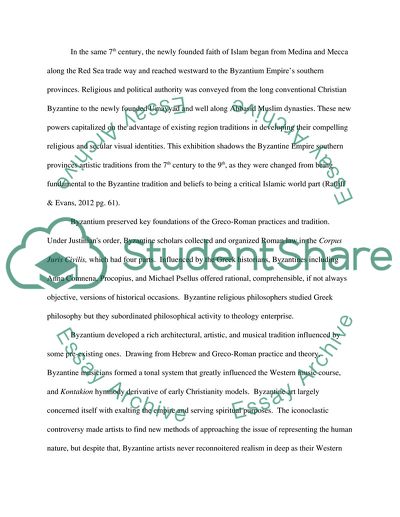Cite this document
(“Relationship between Byzantium and Islam Essay Example | Topics and Well Written Essays - 1500 words”, n.d.)
Relationship between Byzantium and Islam Essay Example | Topics and Well Written Essays - 1500 words. Retrieved from https://studentshare.org/history/1796704-were-the-byzantine-and-islamic-systems-unique-or-were-they-adaptations-of-previous-systems-make-sure-you-examine-the-central-role-religion-played-in-both
Relationship between Byzantium and Islam Essay Example | Topics and Well Written Essays - 1500 words. Retrieved from https://studentshare.org/history/1796704-were-the-byzantine-and-islamic-systems-unique-or-were-they-adaptations-of-previous-systems-make-sure-you-examine-the-central-role-religion-played-in-both
(Relationship Between Byzantium and Islam Essay Example | Topics and Well Written Essays - 1500 Words)
Relationship Between Byzantium and Islam Essay Example | Topics and Well Written Essays - 1500 Words. https://studentshare.org/history/1796704-were-the-byzantine-and-islamic-systems-unique-or-were-they-adaptations-of-previous-systems-make-sure-you-examine-the-central-role-religion-played-in-both.
Relationship Between Byzantium and Islam Essay Example | Topics and Well Written Essays - 1500 Words. https://studentshare.org/history/1796704-were-the-byzantine-and-islamic-systems-unique-or-were-they-adaptations-of-previous-systems-make-sure-you-examine-the-central-role-religion-played-in-both.
“Relationship Between Byzantium and Islam Essay Example | Topics and Well Written Essays - 1500 Words”, n.d. https://studentshare.org/history/1796704-were-the-byzantine-and-islamic-systems-unique-or-were-they-adaptations-of-previous-systems-make-sure-you-examine-the-central-role-religion-played-in-both.


